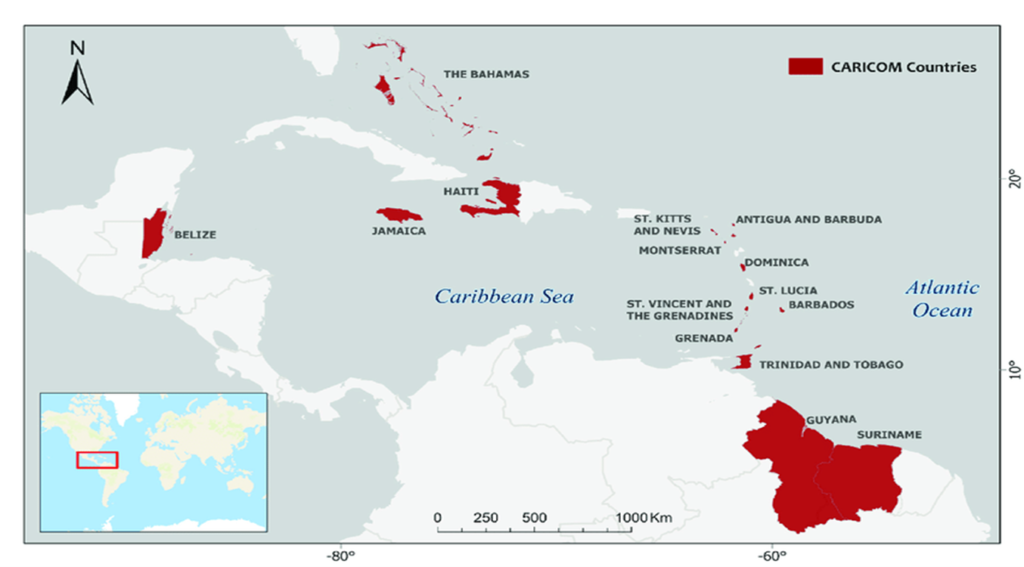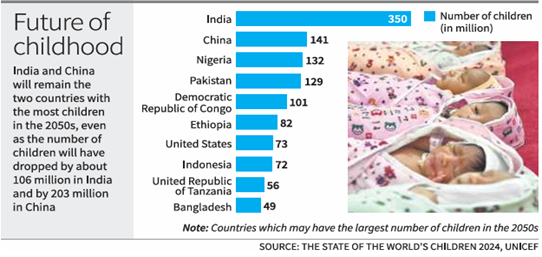GM Crops: A Sustainable Solution to Food Security or a Double-Edged Sword?
(General Studies III – Science & Technology section – Awareness in the fields of IT, Space, Computers, Robotics, Nano-technology, Bio-technology and issues relating to Intellectual Property Rights.)
- With the global population projected to reach 9.7 billion by 2050, feeding billions without exacerbating environmental degradation has become one of the most critical challenges of our time.
- According to the Food and Agriculture Organization (FAO), global food production needs to increase by 60% by 2050 to meet demand. Genetically Modified (GM) crops, introduced in the 1990s, have emerged as a promising solution to enhance agricultural productivity, increase crop resilience, and reduce chemical usage.
| Factsheet on GM Crops GM crops were first commercially planted in 1996, with global adoption reaching 190.4 million hectares in 2021.The United States leads GM crop cultivation, followed by Brazil, Argentina, and Canada, contributing to over 80% of global GM crop production.In 2022, the most widely grown GM crops globally included soybean (50%), maize (30%), cotton (13%), and canola (5%).India approved its first GM crop, Bt cotton, in 2002, which now constitutes 94% of the country’s cotton cultivation.The Genetic Engineering Appraisal Committee (GEAC) oversees GM crop approvals in India under the Ministry of Environment, Forest, and Climate Change.India is the fifth-largest producer of GM crops globally, cultivating over 11.9 million hectares, primarily Bt cotton.Globally, GM crops contribute to a 22% increase in farmer income and a 21% reduction in chemical pesticide use (ISAAA, 2021).Major GM crop exporters include the U.S., Brazil, and Argentina, while the EU has stringent import regulations, with limited approvals for cultivation.As of 2022, over 70 countries import GM crops for food, feed, and processing. |
Advantages of GM Crops –
- Increased Yield and Nutritional Value: GM crops like Bt cotton and herbicide-tolerant (HT) crops improve yields and reduce the need for extensive land use, which could help address food security concerns.
- Crops can be engineered to have higher nutritional content, such as fortified rice or drought-resistant wheat.
- Reduction in Chemical Usage: Bt crops, which produce their own insecticide, have reduced the need for harmful chemical pesticides.
- Farmers, especially in countries like India, benefit by avoiding exposure to toxic insecticides, reducing health risks.
- Sustainable Farming Practices: GM crops enable no-till farming, which helps reduce carbon emissions by avoiding soil disturbance.
- Herbicide-tolerant crops simplify weed management and reduce the labor and resources required.
- Advanced Tools for Modification: Modern tools like CRISPR allow precise genetic edits without introducing foreign DNA, increasing public acceptance of GM crops.
Challenges and Risks –
- Pest and Weed Resistance: Over-reliance on single-trait crops like Bt or glyphosate-tolerant varieties has led to resistance among pests and weeds, forcing farmers to use more chemicals.
- Environmental Impacts: Long-term effects on biodiversity, including impacts on insect pollinators, remain under-researched and poorly understood.
- Herbicides like glyphosate and dicamba, used with HT crops, are linked to toxicity and ecosystem disruptions.
- Monopolisation and High Costs: Few multinational companies dominate the GM crop market, tying seed sales to specific herbicides, limiting farmers’ choices, and increasing dependence on corporations.
- Regulatory costs for GM crops exceed $40 million per trait, sidelining public institutions and smaller enterprises from innovation.
- Regulatory and Public Acceptance Issues: Many regulatory frameworks focus on whether a crop is GM, rather than evaluating its traits or potential impacts, leading to a “black and white” approach to approval.
- Lack of longitudinal data complicates the assessment of GM crop impacts on biodiversity and ecosystem health.
Expert Insights and Recommendations –
- Adopt Diversified Approaches: Experts recommend planting non-GM crops alongside GM crops to counter pest resistance and reduce the pressure on single genetic traits.
- Crop rotation and integrated pest management are suggested to minimize herbicide and pesticide dependence.
- Strengthen Regulations with Nuance: Regulators should evaluate traits (e.g., nutrition or herbicide resistance) rather than just the method of genetic modification.
- Increase Data Transparency: Long-term studies and independent research are needed to understand the broader ecological and health impacts of GM crops.
- Support Public Institutions: Governments should invest in public research to develop affordable, context-specific GM solutions that cater to small-scale farmers.
| The adoption of genetically modified (GM) crops presents both opportunities and challenges. They can enhance agricultural productivity and food security, especially in the face of climate change and a growing global population. However, concerns persist regarding environmental impacts, health safety, and socio-economic issues such as corporate control over seeds. A balanced approach involves rigorous scientific assessment, transparent regulation, and consideration of ethical and socio-economic factors to ensure that GM crops contribute positively to sustainable agriculture and food systems. |




